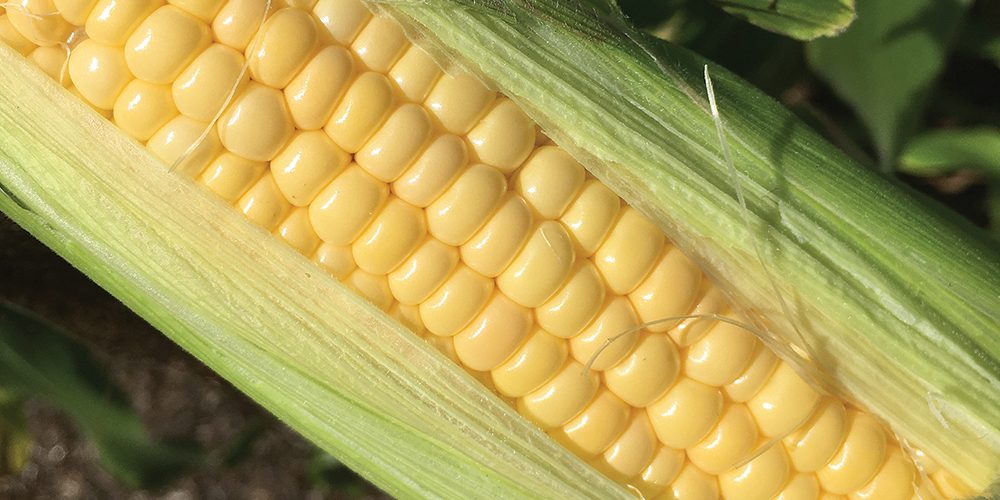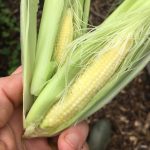How to grow... Sweetcorn
Rocket Growing Guides

Nothing compares to your own home grown, freshly picked corn-on-the-cob. One mouthful and you’ll see just how different it tastes to any sweetcorn you buy in the shops – so much sweeter and juicier. And best of all, they are virtually pest free so you shouldn’t have any trouble growing them.
It is best to plant them in a grid rather than a single row, as this will allow for better pollination (sweetcorn relies on wind pollination) and thus well-formed cobs.
- Sweetcorn Growing Guide
How to Plant Sweetcorn
- Choose a sunny site with fertile, moisture-retentive soil – add plenty of compost, well-rotted manure or wormcast fertiliser.
- If you receive your plants early in the season, while nights are still cold or there is a risk of frost, it is best to temporarily plant in the punnets that they arrive in, or in small pots, and keep them on a sunny windowsill or in a greenhouse until the weather warms up a little.
- Sweetcorn: 30cm apart in raised beds/traditional veg patch. Plant in a grid (eg 3 rows of 3 rather than a single row) – this is because sweetcorn is wind pollinated, and the proximity of planting like this helps to improve pollination rates to ensure the kernels swell.
- Baby Corn: 20cm apart in beds/pots/growbags. Plant in a single row to avoid the kernels from being pollinated so that you get the baby corn you expect rather than developed kernels.
- Firm in well to help the plant stay stable on windy days as it gets taller.
How to Grow Sweetcorn
- Keep it well watered during the summer, especially as the cobs start to form – try to avoid the soil getting too dry in between waterings.
- Don’t plant out until risk of frost has passed. Make sure plants are sheltered from strong cold winds in spring – you could cover plants with a cloche in the early days until the weather warms up and settles.
- Keep protected from slugs, especially when the plants are young.
- Use a hoe to weed between plants on a regular basis – a couple of times a week should do the trick.
- Once the plants reach approx 1m tall, it is a good idea to earth them up around the base. Simply bring a little soil around the base of the plant to make a molehill like mound, and firm it down. This will give the plants a little more stability on windy days. (You don’t need to do this for baby sweetcorn)
Common Pests & Problems with Sweetcorn
- No kernels formed – this is due to poor pollination – if the plants are too far apart, or planted in a single row this is a common issue as the plants rely on wind pollination.
- Long shredded holes in leaves – this is actually slug damage. The slugs don’t like the ribbed veins, so eat the leaf in between making these streaks.
- Earwigs – you may find one or two lurking inside cobs. If they are abundant in your garden you can leave a dampened roll of newspaper at the base of plants and the earwigs will probably hide here. Then shake it out each morning.
- Brown/Yellow Leaves – This kind of discolouration on leaves is usually due to a lack of water and nutrients. Water regularly, keeping the soil nice and moist, and apply a fortnightly liquid feed.
How to Harvest & Store Sweetcorn
- Harvest sweetcorn towards the end of the summer/beginning of autumn. Once the strands on the ends of the cob start to turn dark brown (almost black) they are ready to pick. You can double check by peeling back the outer husk and piercing a kernel with your thumbnail – if the liquid is milky, it’s ready to be picked. If it’s clear, you need to be a little more patient!
- For baby corn, harvest young while the tassels are still pale and the cobs are approx 10cm long.
- Sweetcorn is absolutely at its best eaten the same day as harvesting… it will keep at room temperature or in the fridge for a few days, but it won’t taste anywhere near as special!


